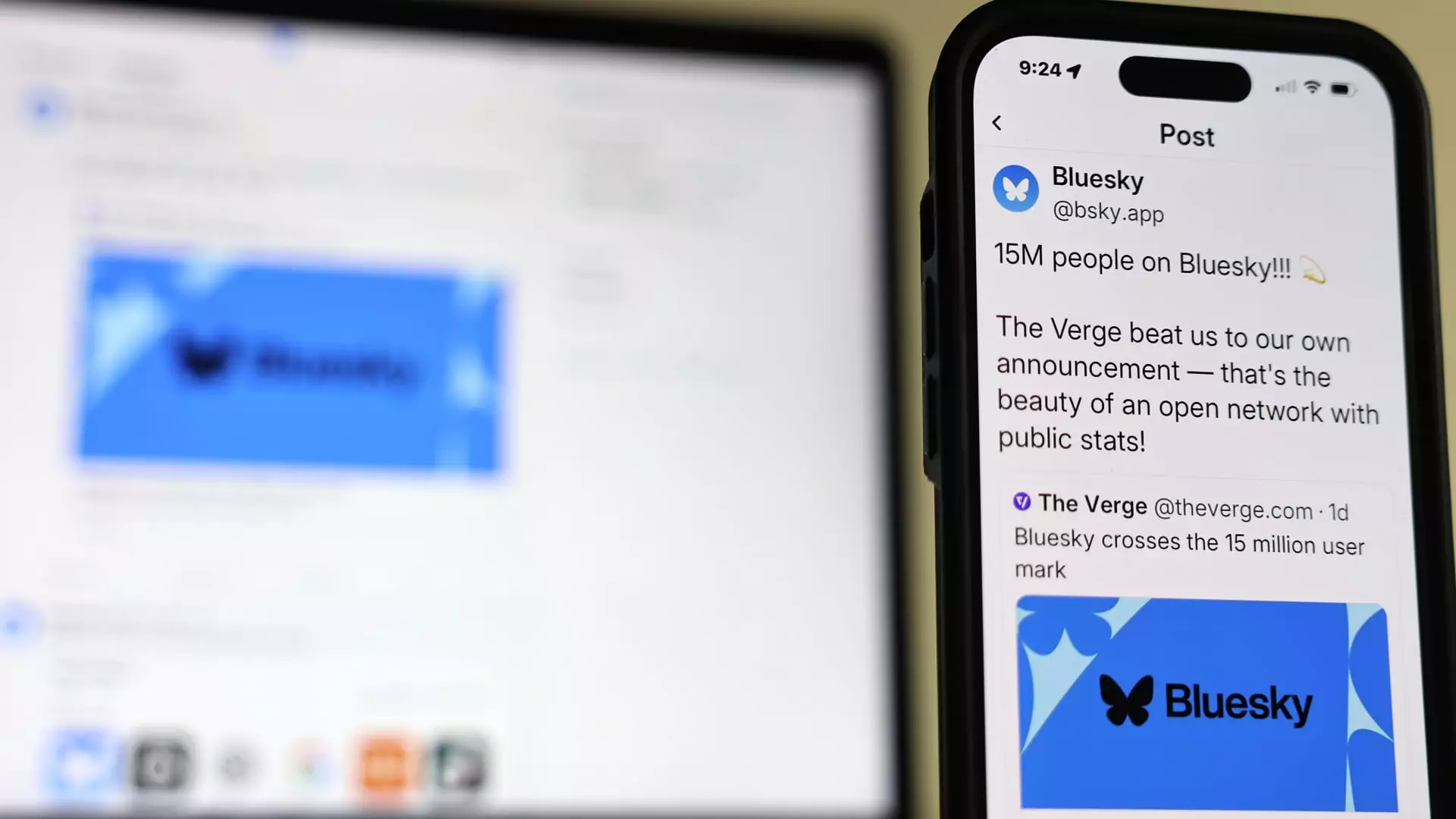Since the recent presidential election, the social media platform Bluesky has gained substantial traction, positioning itself as a noteworthy contender against established giants like Elon Musk’s X (formerly Twitter) and Meta’s Threads. With more than 21 million users as of now, Bluesky’s ascent seems poised to challenge the social media status quo. This growth evokes curiosity and hope for a different breed of social platforms, particularly in light of the tumultuous changes users have experienced on other networks in recent years.
Yet, as Bluesky’s CEO Jay Graber emphasizes, there’s a pivotal ethos that sets the platform apart. Graber described Bluesky as “billionaire proof,” a phrase that encapsulates the platform’s underlying commitment to user autonomy and data transparency. Through its open-source design, Bluesky aims to mitigate the distressing consequences that users faced when Twitter was acquired by Musk, which resulted in mass exoduses due to sudden policy changes and a perceived decline in user experience.
Graber elaborated on the significance of Bluesky’s architecture, which allows users to take their follower networks with them should they choose to migrate to another platform. This feature represents a robust safeguard against potential power plays by affluent investors or corporations. In essence, it provides users with the ability to relocate their social interactions, quite unlike what occurred on platforms like Twitter, where millions felt trapped post-acquisition.
The emphasis on an open-source foundation is particularly revolutionary within the social media domain. It represents a paradigm shift toward genuine user empowerment, as users aren’t merely subjects of a corporate monolith but active participants in the social media ecosystem. This design reflects Graber’s commitment to a social network that prioritizes user experience and fosters genuine community engagement, varying greatly from the prevalent profit-maximizing algorithms that dominate other platforms.
The rationale behind Bluesky’s development is deeply entwined with the lessons learned from the controversies and user dissatisfaction experienced on X. The drastic changes in content policies, coupled with a fluctuating user experience under Musk’s leadership, have underscored the fragility of user loyalty in the face of corporate decisions. Bluesky’s emergence could signify a broader shift in how social media platforms are constructed—turning the tables and placing the agency back into the hands of users rather than shareholders.
Furthermore, the timeline of Bluesky’s evolution shows an impressive trajectory since its inception as an internal Twitter project in 2019. The transition to a public benefit corporation reflects a burgeoning trend where social media platforms are held accountable not just for profits, but for social impact and user-driven design.
Graber has further hinted at Bluesky’s innovative plans concerning monetization. Unlike many platforms that bombard users with algorithm-driven advertisements, Bluesky seeks to explore alternative funding avenues, such as subscriptions for premium features. This approach not only respects the user experience but also proposes a sustainable business model that does not exploit user data for profit.
As the platform matures, it plans to expand its developer ecosystem by encouraging third-party app development. This initiative could furnish users with tailored features and experiences, further enhancing engagement while reinforcing the concept of community-driven content.
In a landscape defined largely by corporate takeovers and algorithmic manipulation, Bluesky offers a refreshing perspective—one that champions transparency, user control, and a commitment to building genuine online connections. As it continues to grow and refine its offerings, Bluesky seeks to provide an alternative to the traditional social media experience, representing a challenge to platforms like X and Threads.
With the increasing need for safe and autonomous digital spaces, Bluesky might just emerge not only as a viable competitor but also as a potential model for what social networks should strive to become in the 21st century. Ultimately, by prioritizing user agency and ethical practices, Bluesky could redefine the future of social interaction online.

Leave a Reply